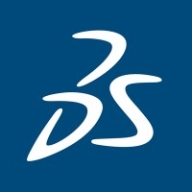

No Magic MagicDraw and Camunda are involved in the modeling and workflow sectors. Camunda appears to have the upper hand due to its enhanced process management features and scalability.
Features: MagicDraw offers robust simulation capabilities, user-friendly standards compliance, and excellent traceability features, which allow for thorough collaboration and modeling. Camunda provides BPMN 2.0 compliance, extensive REST API features, and it is open-source, which permits significant customization opportunities.
Room for Improvement: MagicDraw could enhance its deployment process to be more intuitive and reduce technical complexity. Additionally, improving its collaborative features for team-based environments and broadening integration with other systems would be beneficial. Camunda can enhance its user interface to be more accessible to non-technical users, simplify its workflow customization process, and offer more comprehensive documentation to aid beginners.
Ease of Deployment and Customer Service: MagicDraw has a complex setup process but compensates with detailed documentation. Camunda’s deployment is more streamlined, supported by extensive resources and a responsive customer service team, making integration into existing systems smoother.
Pricing and ROI: MagicDraw's initial cost is higher, yielding long-term value in efficiency for system design. Camunda's pricing is competitive, providing a quicker ROI by improving operational efficiencies immediately, appealing to businesses needing rapid process optimization.
| Product | Market Share (%) |
|---|---|
| Camunda | 11.3% |
| No Magic MagicDraw | 2.7% |
| Other | 86.0% |


| Company Size | Count |
|---|---|
| Small Business | 42 |
| Midsize Enterprise | 15 |
| Large Enterprise | 29 |
| Company Size | Count |
|---|---|
| Small Business | 14 |
| Midsize Enterprise | 1 |
| Large Enterprise | 7 |
Camunda revolutionizes process orchestration by enabling seamless automation and integration with AI, human tasks, and existing systems while ensuring security and governance.
Built for collaboration between business and IT, Camunda empowers organizations to manage complexity, boost efficiency, and maintain competitive advantage. With a clientele of over 700 top organizations like Atlassian, ING, and Vodafone, Camunda is a trusted partner in designing, orchestrating, automating, and refining critical business processes to accelerate digital transformation. Its open-source nature, ease of use, and REST API integration make it a versatile choice for various needs.
What are Camunda's key features?In banking, Camunda automates processes and manages transactions, while in telecommunications, it optimizes service orders. Governmental and public sectors benefit from workflow automation. Organizations often use either the enterprise edition or the open-source version to create APIs and manage business rules effectively.
No Magic MagicDraw is a versatile solution designed to enable users to work on everything from business processes to architecture or software and system modeling.
No Magic MagicDraw is an extremely robust solution that is designed for a range of professionals. This product is invaluable to business analysts, software analysts, programmers, QA engineers, and documentation writers. It is a highly dynamic and versatile tool that can aid in the analysis and design of Object Oriented (OO) systems. It maximizes the ability of teams to work in tandem by allowing everyone working on a particular project to automatically gain access to the newest version of the model that they are working on. This way everyone can work on their part of the project without having to worry about updating each part of the project individually.
Benefits of No Magic MagicDraw
Some of the benefits of using No Magic MagicDraw include:
Reviews from Real Users
No Magic MagicDraw stands out among its competitors for a number of reasons. Two major ones are the way that it enables users to efficiently create models and the overall robustness of the solution. Users are given the ability to efficiently and accurately model the requirements of whatever it is that they are creating. No Magic MagicDraw provides users with many valuable features that allow them to maximize what they can do with the solution.
PeerSpot user Wayne L., a Systems Engineer at SIMTRS, notes the way in which No Magic MagicDraw allows users to create models more efficiently. He writes, “We are getting away from the old ways of writing a lot of papers and requirements documents, architecture documents, technical solution documents, interface documents - those days are gone. MagicDraw allows you to model the requirements, and by doing so, you've got a good chance of not missing any requirements. The old way of doing things was to decompose the requirements into shell statements. But when you model it, you will be able to practically make sure you don't miss anything. MagicDraw has a good modeling tool you use for case diagrams. Its use case diagram is part of the UML and SysML that you can use to model requirements to create an architecture. I've created a lot of architectures for the Army and also mapped those components of the architecture as the test procedures.”
PeerSpot user Terry J., the president at I2R, Inc., notes the robustness of No Magic MagicDraw when he writes, "When you look at it, No Magic is an all-encompassing tool. You can use it for business architecture design. You can use it for deploying an ERP system across your enterprise. However, it was initially designed and developed for model-based systems engineering. That's the systems engineering required to either produce an IP system or product. It takes away the mounds of paper and puts it into a model. It enables you to generate significant savings by modeling that new product or that system before you ever start developing a prototype."
We monitor all Business Process Design reviews to prevent fraudulent reviews and keep review quality high. We do not post reviews by company employees or direct competitors. We validate each review for authenticity via cross-reference with LinkedIn, and personal follow-up with the reviewer when necessary.